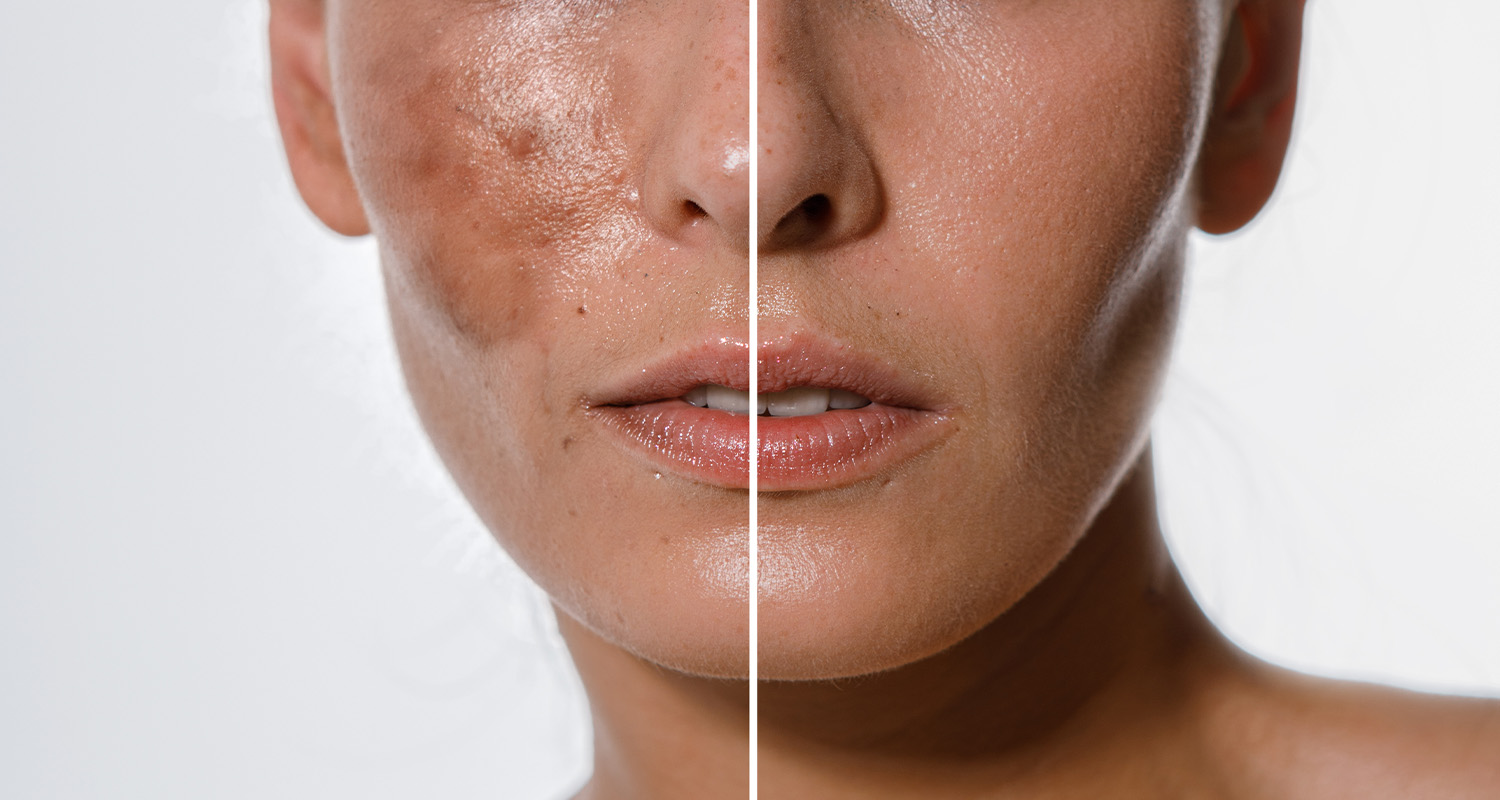The Science Behind Skin Brightening Treatments

In our pursuit of a radiant and youthful appearance, skin brightening treatments have emerged as an enticing option for many. These treatments, ranging from Intense Pulsed Light (IPL) therapy to chemical peels, work by reducing skin pigmentation and revealing a more even complexion.
Let’s dive into the science behind these treatments and discover how they work.
Understanding the Role of Melanin in Skin Pigmentation
Melanin is the primary pigment responsible for the color of our skin, hair, and eyes. It’s produced by cells called melanocytes, which distribute melanin to the surrounding skin cells. The more melanin produced, the darker the skin appears.
The Two Types of Melanin
Melanin is a complex and fascinating component of our skin, responsible for its coloration. It’s primarily classified into two types:
Eumelanin: Responsible for Black or Brown Shades
Eumelanin is the most common type of melanin and is found in large quantities in people with dark hair and skin. It provides protection against harmful UV radiation from the sun.
While it is beneficial in safeguarding the skin from sun damage, overproduction can lead to hyperpigmentation, causing an uneven complexion or dark spots. Various factors, including sun exposure and hormonal changes, can stimulate the production of eumelanin, leading to these skin concerns.
Pheomelanin: Produces Red or Yellow Shades
Pheomelanin is prevalent in people with lighter skin tones, red hair, and freckles. Unlike eumelanin, pheomelanin does not provide significant protection against UV radiation.
Consequently, individuals with higher levels of pheomelanin are more prone to sunburn and potential skin damage. Understanding the role of these melanin types helps in designing targeted skin brightening treatments to correct and balance pigmentation issues.
The Process of Intense Pulsed Light (IPL) Therapy
Intense Pulsed Light (IPL) therapy is a popular skin brightening method that targets melanin in the skin.
How It Works
IPL uses a broad spectrum of high-intensity light that penetrates multiple layers of skin. This light is absorbed by melanin, breaking down pigment and promoting the growth of new, healthy skin cells. It also stimulates collagen production, improving skin elasticity and reducing the appearance of fine lines.
Targeting Specific Pigment Problems
IPL is versatile and can be customized to target different skin concerns, such as freckles, sunspots, or uneven skin tone.
Safety and Effectiveness
IPL is generally considered a safe treatment, especially when performed by trained professionals. Multiple sessions may be required to achieve desired results.
Other Skin Brightening Methods
Chemical Peels
Chemical peels use a chemical solution to exfoliate the outer layer of dead skin cells, revealing brighter and more even skin underneath. The type and strength of the chemical peel can be tailored to individual skin needs and concerns.
Dermalinfusion
Dermalinfusion is a non-invasive treatment that combines exfoliation, extraction, and infusion of serums to improve skin health and brightness. It’s suitable for various skin types and can be customized with specific serums for targeted results.
What to Expect During and After a Skin Brightening Treatment
Embarking on a skin brightening journey can be exciting, but knowing what to expect during and after the treatment can ease any apprehension.
During the Treatment
Skin brightening treatments, whether it’s IPL therapy, chemical peels, or dermalinfusion, may involve some level of discomfort or tingling sensation.
Most professionals will guide you through the process and may use cooling gels or numbing creams to enhance your comfort. You’ll be informed about the sensations you might experience and the expected duration of the treatment.
After the Treatment
Post-treatment reactions vary depending on the type and intensity of the treatment.
IPL Therapy: Expect sunspots or freckles to darken before fading. Mild swelling or redness is common but should resolve quickly.
Chemical Peels: You might notice peeling or flaking of the skin as it heals. Moisturizing and following aftercare instructions will aid in the healing process.
Guidance on post-treatment care will be provided to ensure optimal results and comfort during the healing phase.
Who are the Best Candidates for These Treatments
Skin brightening is an enticing option for many, but not all treatments are suitable for everyone. Here’s what you need to know:
Skin Type and Concerns
Individuals with skin issues like uneven skin tone, age spots, or sun damage might find these treatments highly beneficial. Specific considerations for skin type and color are crucial, as some treatments may not be suitable for very dark or tanned skin.
Health Considerations
It’s vital to consider underlying health conditions, medications, or skin sensitivities that might impact the treatment’s effectiveness or safety. Conditions like active infections or certain autoimmune diseases may contraindicate some procedures.
Expectations and Goals
A thorough discussion with your skincare provider about your expectations, goals, and concerns ensures a personalized treatment plan. Clear communication fosters a successful treatment experience and satisfaction with the results.
Navigating the world of skin brightening treatments requires understanding these intricate details. Collaborating with skilled professionals who are well-versed in the science of skin pigmentation ensures a safe and rewarding experience.
Whether seeking to reduce age spots or achieve an overall brighter complexion, these treatments provide a pathway to rejuvenated and more youthful-looking skin.
How to Maintain Results After Skin Brightening Treatments
Maintaining results requires an ongoing commitment to proper skincare.
Sun Protection: Sun exposure can reverse the effects of the treatments. Using sunscreen and avoiding excessive sun is crucial.
Quality Skincare Products: Utilizing products specifically recommended for your skin type and concerns can extend and enhance results.
Regular Maintenance Treatments: Periodic follow-up treatments with your skincare provider can help maintain the results.
Skin brightening treatments offer an exciting avenue for those looking to improve their complexion. Understanding the science behind these treatments and collaborating with skin professionals ensures that the right method is chosen for your unique needs, leading to a more radiant and youthful appearance.


